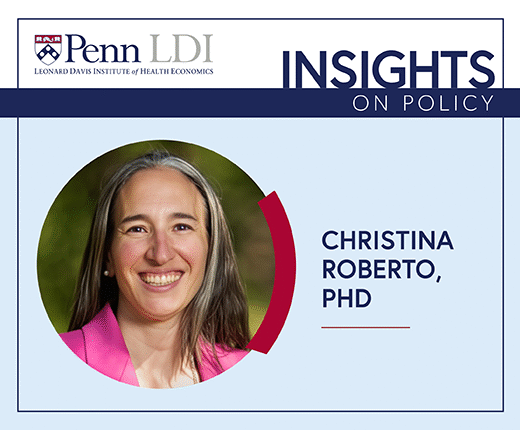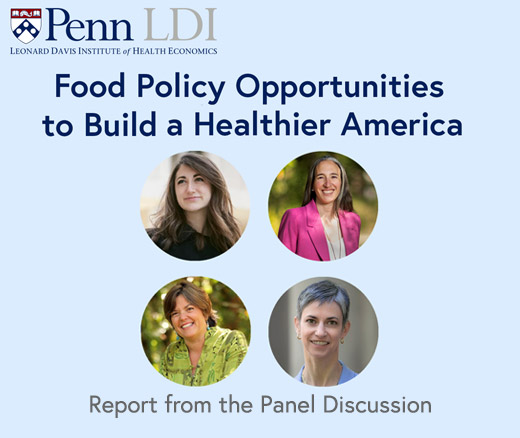
How 60 Years of Change Realigned U.S. Health Law’s Role
Government Regulatory Power Wanes as Power Accrues to Courts and Corporations
Blog Post

During the first six months of the pandemic, healthy newborns were discharged from hospitals faster, often after one midnight. In a new study in Pediatrics, Sara Handley and colleagues find that this shorter length of stay did not increase infant readmissions in the first week, suggesting that earlier discharge can be done safely.
The authors analyzed electronic health records on healthy, full-term newborns across 35 health systems, and compared data on infants born between March 1 to August 31, 2020 with those born at the same time of year in 2017, 2018, and 2019. They compared the percentage of newborns with shorter lengths of stay (defined as less than 2 midnights for vaginal births, and less than 3 midnights for cesarean births) and rehospitalization rates within seven days of discharge.
Their results were reassuring. During the pandemic, 43% of all healthy, full-term newborns had shorter hospital stays, up from 28.5% in earlier years. As shown in Table 1, shorter stays increased for both vaginal and cesarean deliveries. Despite the increase in shorter stays, infant rehospitalizations after seven days decreased slightly during the pandemic, going from 1.2% to 1.1%. This suggests that the shorter length of hospital stay was safe, at least for these healthy, full-term infants who were selected by the family and clinician to go home early.
| Pre-pandemic newborns with shorter hospital (LOS) | Early COVID-19 newborns with shorter hospital (LOS) | |
| All full-term infants | 28.5% | 43.0% |
| Vaginal births | 25.6% | 39.3% |
| Cesarean births | 40.1% | 61.0% |
These pandemic-related changes represent a natural experiment of shorter lengths of stay for healthy newborns. How long infants should stay in the hospital is a matter of ongoing debate. The discharge recommendations from the American Academy of Pediatrics for healthy, term infants are based on individual characteristics, including maternal and infant health, home support systems, and access to follow-up care, not time. However, a wave of legislation in the1990s set mandatory minimum hospital lengths of stay for newborns and mothers after childbirth. The result was an increase in the length of time mothers and babies spent in U.S. hospitals and, so far, it is unclear whether these changes improved infant health. In 2008, the federal government finalized rules that health plans could not restrict maternity-related length of stay to less than 48 hours for a vaginal delivery or 96 hours for a cesarean section.
This research challenges us to consider when and under what circumstances some healthy, term infants can be discharged earlier. The authors studied just one outcome, and other important maternal and child health outcomes need to be studied as well. These results suggest that the quality of infant care during the hospital stay and post-discharge did not markedly decline in the context of shorter lengths of stay.
The study, Birth Hospital Length of Stay and Rehospitalization During COVID-19, was published in Pediatrics on December 23, 2021. The authors include Sara C. Handley, Kieran Gallagher, Amy Breden, Eric Lindgren, Justin Y. Lo, Moeun Son, Daria Murosko, Kevin Dysart, Scott A. Lorch, Jay Greenspan, Jennifer F. Culhane, and Heather H. Burris.

Government Regulatory Power Wanes as Power Accrues to Courts and Corporations

Temporary Shutdown Losses are Only the Beginning: New Rules Under the One Big Beautiful Bill Act will Shrink SNAP Benefits, and Worsen Food Insecurity for Millions Across the U.S.
Research Brief: Shorter Stays in Skilled Nursing Facilities and Less Home Health Didn’t Lead to Worse Outcomes, Pointing to Opportunities for Traditional Medicare

A New Call to Action Urges Three Ways State and Local Leaders Can Act To Ban Additives, Improve Food Labels, and Restrict Marketing to Children

New Therapies Inspire Hope, Even as Access and Treatment Risks Continue to Challenge Patients and Providers

Testimony: Delivered to Philadelphia City Council’s Committee on Labor and Civil Service

The Wharton Professor Produces a Compendium of Economics Wisdom for Health Care Pros

Announcing Bold New Goals While Crippling the Infrastructure Needed to Achieve Them